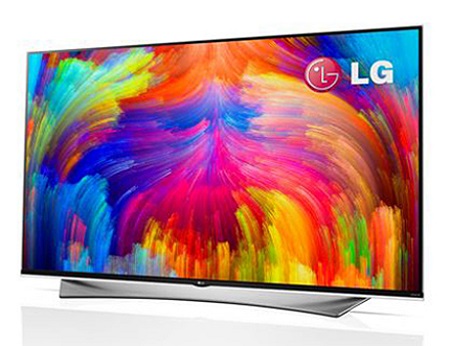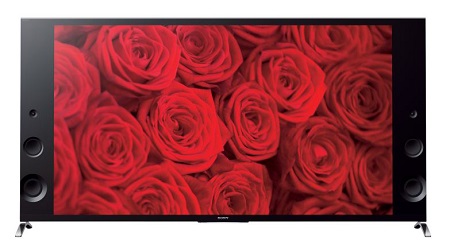Quantum Dots Make a Scene at the 2015 CES

LG quantum dot TV
ALEXANDRIA, VA. — One of the heavily hyped technologies to emerge from the 2015 Consumer Electronic Show was "quantum dot" displays. It might have seemed as though quantum dots were new to displays this year, but Sony introduced the technology in 2013 in its XBR X900A consumer 4KTVs, although Sony did not use the term "quantum dot."
At the 2015 CES show, Samsung and LG jumped aboard the quantum dot bandwagon, and even experienced broadcasters came away impressed with the brightness, contrast, clarity and color saturation of these displays. So what is quantum dot and what does it mean to viewers and broadcasters?
The term is attributed to Mark Reed, a physicist and professor at Yale University. In this context, a quantum dot is a tiny semiconductor crystal so small that it exhibits properties of both larger semiconductors and single molecules. Objects approaching the size of single molecules begin to show the features of quantum mechanics, thus the term "quantum dots." To give you an idea of the size of these quantum dot structures, they range in size from one to 100 nanometers (a nanometer is a billionth of a meter).
The displays shown at CES (and the earlier ones from Sony, which are still in the company's product line) use fluorescent-dye quantum dot LEDs. With this technology, two electrodes in the quantum dot diode are separated by a band gap. As electrons in one electrode move toward holes in the opposing electrode, the size of the band gap determines the frequency of the radiation emitted once the hole and electron combine—the narrower the gap, the higher the frequency.

Samsung quantum dot TV
The size of the band gap can be controlled precisely, so these new displays can be tuned for pure and intense color. A layer of tiny quantum dot LEDs is placed between the LED emitter and LCD screen, and the intense color from the quantum dots gives these displays more saturated color and a shot of brightness. These displays use in-plane switching technology to provide wide viewing angles.
The professional video industry's #1 source for news, trends and product and tech information. Sign up below.
TOO PUNCHY?
The combination of strong contrast and bright images produced images that some acquaintances at the CES show felt were too punchy. This may have more to do with the tendency of consumer display manufacturers to "goose" the contrast and color to attract more eyeballs than with the nature of the technology.
Figure 1 - Color Gamut Chart
Click on the Image to Enlarge

The color gamut perceived by the human eye was researched by Michael R. Pointer, who published a paper in 1980 that established what has come to be known as Pointer’s Gamut. This is a graph showing the colors that can actually be detected by humans, although different individuals will have a certain amount of variation. In 2012, the ITU published recommendation 2020 that specifies the ideal color gamut for a 4K (UHD) television display.
Figure 1 shows Pointer’s Gamut as well as ITU-Rec. 2020 and the gamut shown by a quantum dot display. Notice how both the Rec. 2020 standard and actual quantum dot display measurement (identified as “Nanosys QD Gamut”) exceeds Pointer’s Gamut in most places.
Samsung was one of the companies making a splash with quantum dot displays, and it said the contrast and brightness were more than twice that of ordinary TVs and the color was "64 times better than you'd see on a standard TV." As with other surface display technologies such as OLED and in-plane switching, quantum dot displays have wide viewing angles. LG, another manufacturer that showed several models of quantum dot TVs at CES 2015, said that the "color reproduction rate" in its TVs is increased by more than 30 percent compared with conventional LCD/LED TVs.
Both LG and Samsung said that quantum dot TVs have extremely wide color gamut, and that's what attracted the attention of broadcast industry attendees at CES. For consumers, Samsung will supply quantum dot TVs in sizes ranging from 48 to 88 inches, all with 4K resolution and curved screens. LG announced two 4K quantum dot models: 55- and 65-inch.

Sony XBR-79X900B 4K quantum dot TV Although consumer electronic manufacturers are touting the intense color of these quantum dot displays, broadcasters and content producers have a need to ensure they produce and transmit programs that meet a strict color gamut. As of today, there's no standards body (such as SMPTE) that has evaluated enough of these TVs to give any guidance on their suitability for broadcast production use.
Still, their big size, 4K resolution, punchy color and wide contrast likely mean these displays will turn up in control rooms, lobbies and GM offices. Depending on the acceptance and spread of this technology, this could mean new guidance from SMPTE on color gamut. Prepare to be quantum dotted in the future.
Bob Kovacs is the former Technology Editor for TV Tech and editor of Government Video. He is a long-time video engineer and writer, who now works as a video producer for a government agency. In 2020, Kovacs won several awards as the editor and co-producer of the short film "Rendezvous."

